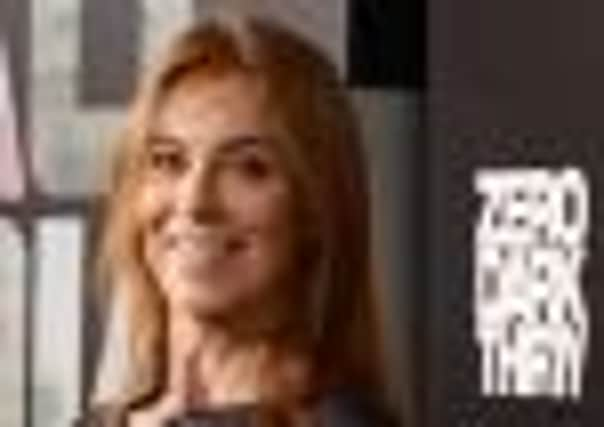Interview: Director Kathryn Bigelow on making Zero Dark Thirty


“I can’t help but compare my character to you, to a powerful, fearless woman that allows their expert work to stand before them,” said Chastain after receiving the award for her portrayal of Maya, a CIA agent who dedicates her life to hunting Osama bin Laden in Bigelow’s latest movie, Zero Dark Thirty.
Bigelow may not have set out to break gender rules with “macho-themed” movies, such as the iconic surfer-cop tale Point Break, the real-life naval account K-19: The Widowmaker, and the Iraq-based bomb disposal tale The Hurt Locker (for which she became the first woman to receive an Oscar for directing), but as Chastain observed, she’s successfully managed to “disobey the conventions of Hollywood”.
Advertisement
Hide Ad“That’s not, let’s say, a reason to engage in a particular topic,” says Bigelow. “What’s interesting to me is the topicality of something. Certainly with The Hurt Locker and Zero Dark Thirty, it’s the fact these are stories that are almost contemporaneous with our lives. There’s an urgency, a resonance and a topicality that, as a filmmaker, makes it very stimulating and exciting material to work with.”
Following the terrorist attacks on 11 September, 2001, the hunt for Osama bin Laden preoccupied the US for more than a decade. In the end, it took a small, dedicated team of CIA operatives to track him down to a compound in Abbottabad, Pakistan. “It’s the story of finding a very sharp needle in a very large haystack,” says Bigelow. “Once bin Laden escaped from Afghanistan, he fenced himself in with a Byzantine network that took years and years to unravel.”
Every aspect of the operatives’ mission was shrouded in secrecy and, while some of the details have since been made public, many of the most significant parts of the intelligence operation are brought to the screen for the first time in Zero Dark Thirty (the military code for the time – 12.30am – when the Navy Seals first stepped into bin Laden’s hiding place). Bigelow says: “The war on terror has touched everybody around the world, especially the families of 9/11 and first responders and military intelligence professionals, and it was a real honour to tell a story of that long, dark decade between 9/11 and May 1, 2011 [the date on which bin Laden was killed].”
The greatest creative challenge posed to Bigelow and Mark Boal – the journalist-turned-screenwriter and producer of both this movie and The Hurt Locker – was how to tell a multifaceted story within the timeframe of a movie. “That was tricky because you’ve got masses of information and you’re compressing it into two-and-a-half hours. But the events were very dramatic and the narrative kind of lined up well, certainly around the main characters.”
The project actually began as a film about the failure to capture bin Laden in Tora Bora; the crew was in pre-production when they heard that bin Laden had been killed. Boal, who’s been Bafta and Oscar-nominated for his screenplay, had to start again. He travelled to Washington DC, Pakistan and other parts of the Middle East for several months, diving into 80-hour weeks to gather first-hand accounts from those involved in the hunt.
“For me, it was interesting to give the audience a glimpse inside the intelligence community and inside an operation that was so incredibly complex and definitely successful but against impossible odds,” says Bigelow. “The public knows very little about what the unsung heroes in the intelligence community go through, which is as it has to be, but here you get a rare opportunity to have a first-hand look at the men and women at the heart of one of the most covert operations in our history.”
Advertisement
Hide AdThat’s primarily achieved through the experiences of Maya who, over the decade, metamorphoses from a shell-shocked new recruit to steely navigator. Along with the audience, Maya’s plunged into the hunt for bin Laden by witnessing the unsettling experience of an “enhanced interrogation” sequence with an al-Qaeda detainee.
The controversial scenes – which depict the use of torture, including waterboarding, during the early stages of the hunt – have sparked global debate, but Bigelow stands by her decision to include them: “As a human being I wanted to cover my eyes, but as a filmmaker, I felt a responsibility to document and bear witness. I think in a way it’s a compliment to the film to stimulate such a vital conversation. It’s only disappointing when the film is mischaracterised.”
Advertisement
Hide AdDetermined not to shoot on sound stages, Bigelow’s shoot took place on three continents, and involved night-vision shots, 120 speaking parts and an exact replica of bin Laden’s compound.
“It was by far exponentially more complicated than anything I’d done before, even The Hurt Locker, which I thought was very difficult at the time.” But if she ever felt overwhelmed by the sheer scope of what she’d undertaken, she isn’t one to admit it. “Actually I was just so honoured to tell this story. I think of it as a story of a lifetime, so I was just very excited and very proud.”
The only child of a paint factory manager and a librarian, Bigelow originally trained as an artist, spending two years at the highly-regarded San Francisco Art Institute, before later landing a scholarship to study film at Columbia University School of Arts. She graduated in 1979, and her first feature-length film, The Loveless starring Willem Dafoe, was released a few years later in 1982.
Zero Dark Thirty has been nominated for five Oscars, including Best Picture, but Bigelow isn’t in the running for Best Director. Does she feel snubbed? “What I’m excited by is the fact the film is performing so well at the box office. There’s such an outpouring of excitement for it, so that’s what’s incredibly gratifying.”
• Zero Dark Thirty is released on Friday.